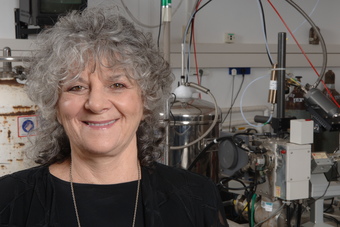
Prof. Ada Yonath
One of the biggest advances in the history of humankind is the development of antibiotics. They have saved untold millions of lives; rendered toothless diseases that were killers for millennia; and are one of the factors behind humanity’s increasingly long lifespan.
However, like all life forms, bacteria have an imperative: reproduce and live. And they are very good at it. Rapid evolvers, they continually seek ways to get around our killer drugs. And they’re succeeding.
We are in the era of the “superbug.” Considered by many healthcare experts to be one of the major global health crises of the 21st century, superbugs can’t be treated. Our finest antibiotics bounce off them like rubber bullets. As USA Today recently put it, “Superbugs threaten to plunge the world into a dangerous, post-antibiotic era in which germs we’ve long been able to control become deadly.”
The situation is so perilous that the United Nations (UN) General Assembly is devoting an entire day to it, bringing world leaders together to address the problem before it gets completely out of control. This is only the fourth time in history that the UN has convened to tackle a health issue.
But the superbug danger goes beyond health, indicating – as The Washington Post states – “the growing awareness by governments as well as disease experts that drug resistance is not just a health problem but also an enormous economic and security threat.”
Fortunately, the Weizmann Institute of Science is ahead of the game. For many years now, Weizmann scientists have sought to build better antibiotics, including next-generation versions that can fight the evolved microbes of tomorrow. In particular, the research of Prof. Ada Yonath is having results. She received the 2009 Nobel Prize in Chemistry for deciphering the structure and function of the ribosome – the cell’s protein factory – and is using her expertise with ribosomes to understand how antibiotics work and to lay the groundwork for new ones. “Our studies are providing structural information that can be used for the design of new and improved antibiotic drugs,” she says in “Building a Better Antibiotic.”
Looking at ribonucleic acid (RNA), another Weizmann research group found that understanding how microbes “switch on” the genes that help them resist antibiotics could lead to better ways of overcoming this resistance. The team, led by Dr. Rotem Sorek, not only found new RNA-control switches for genes encoding antibiotic resistance, but discovered that these switches are actually “turned on” by the antibiotics themselves.
In this research, Dr. Sorek revealed that understanding how bacteria “commit suicide” could lead to development of new antibiotics. Bacteria can be veritable poison factories; besides dangerous toxins such as tetanus and botulism, they can produce poisons especially for committing suicide. The bacteria do this when overwhelmed by a virus, killing themselves to keep the infection from spreading to other bacteria. Understanding how this suicide mechanism works could not only lead to new and better antibiotics, but provide new insights into treating scourges such as tuberculosis.
Still other Weizmann research – this time in the Department of Computer Science and Applied Mathematics – seeks ways to avoid using antibiotics at all. By devising a mathematical formula that explains why some patients develop life-threatening infections after chemotherapy, the researchers could flag high-risk patients for other treatments, thus avoiding infection. Furthermore, infection prevention could be lessened for patients who are at low risk. “Moreover,” the team says, “by cutting down on the use of antibiotics, these assessments can help in preventing the rise in antibiotic resistance.”
